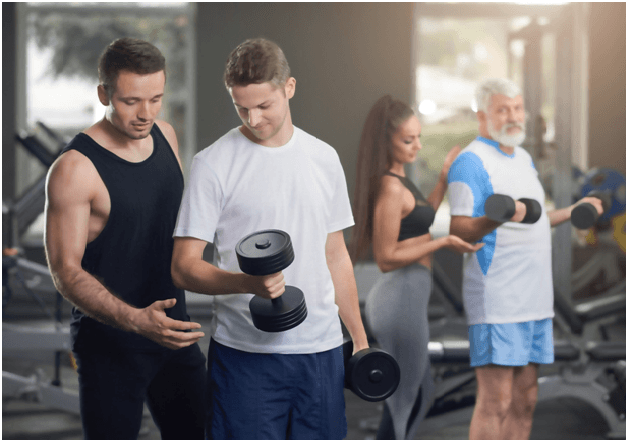Different types of ageing
Have you ever wished to be “forever young” and dreamed about a “magic elixir” that will make you immortal?
While many great scientists have searched, the notorious “fountain of youth”has not been found, perhaps nor ever will be, as ageing (for now!!) is considered as unavoidable.
But, is ageing really unavoidable?
According to the Professor John O. Holloszy’s opinion, there are two types of ageing:
- Primary ageing, which is considered as inevitable and
- Secondary ageing which may be avoidable [1]
What is primary ageing? Can we somehow prevent it?
Primary ageing represents unpreventable deterioration of cellular structure and function independent of disease and environment.
Genetic factors are thought to be responsible for maximal longevity of any given species.
There are hundreds of genes connected with ageing and longevity.
Individually, genes have a relatively small impact on lifespan, but together they account for 25% of our longevity[2].
Until not long ago, it was thought there is no intervention able to reverse primary ageing in humans, but a recent discovery of a CRISPR technology (pronounced “crisper”) may change our lives for the better[3].
This technology represent a simple, cheap and powerful tool that can be used for editing our genes.
It allows scientists to effortlessly adjust DNA sequences and modify gene function[3].
In future, CRISPR technology will be utilised to correct genetic defects, prevent and treat many diseases (e.g. AIDS, different types of cancer, anaemia etc.)and increase our lifespan overall[4].
Additionally, emerging findings revealed the important relationship between ageing and epigenetic regulation.
Epigenetic is a term for a chain of processes that may affect a cell, organ or individual without directly affecting its DNA.
On the other hand, an epigenetic change may indirectly influence the expression of genes[5].
Epigenetic response is very dynamic and may be influenced by different environmental and biological factors including ageing, nutrient availability, and physical exercise.
For example, regular aerobic exercise can change the human genome through a chemical reactions called DNA methylation.
Thus, regular aerobic exercise may induce the production of telomere-stabilising proteins by using epigenetic mechanisms.
Telomere stabilisation is known to be associated with longevity[5].
Click on this link now and book a FREE CONSULTATION with Jazz Alessi.
What is secondary ageing and how to prevent it?
Diseases and environmental factors such as smoking and exposure to ultraviolet radiation cause secondary ageing.
Secondary ageing alters life expectancy, but not the maximum lifespan [1].
More than 70% of people over 65 have two or more chronic conditions, such as diabetes, arthritis, cancer, stroke, or heart disease.
Delaying one age-related disease probably staves off others [2].
Thus, lifestyle modifications that promote health, well-being, and functional capacity minimise disease development and consequently secondary aging [6].

Can physical activity with evidence based prescribed exercises prevent secondary ageing?
Physical inactivity is an important cause of many chronic diseases as it accelerates the secondary ageing process and can lead to premature death.
Even in the most physically active people, maximal oxygen consumption declines in the third decade of life due to primary ageing, but aerobically active or sedentary lifestyles can slow or accelerate this, respectively, by influencing secondary ageing.
Therefore, physical activity and prescribed exercise by a professional trainer are potent countermeasures against secondary ageing and together play a major role in the prevention of the most deadly chronic diseases including:
- Cardiovascular diseases,
- Diabetes mellitus,
- Dementia,
- Depression,
- Osteoporosis and muscle loss [7].
Health benefits of prescribed exercises
Exercise prescribed by a professional trainer favourably affects multiple systems and health outcomes.
A graded relationship between prescribed exercise and the development of following common chronic conditions has been observed:
- Cardiovascular disease
- Diabetes mellitus
- Immune dysfunction
- Musculoskeletal disorders
- Neurological disorders
- Chronic lung disease
- Chronic kidney disease and
- Some cancers.
To achieve long lasting measurable functional changes in work performance, exercise training sessions should be performed three to five times weekly for 12 – 24 weeks.
The intensity, duration, and mode of physical activity, and nutritional status, markedly affect the metabolic and molecular response to a given exercise challenge and in turn determine the nature of changes in skeletal muscle oxidative capacity, mass, and strength [8].
When fitness and exercises are properly assessed and prescribed, adults of all ages are capable of exercising at the same intensity after a period of familiarisation and ramping.
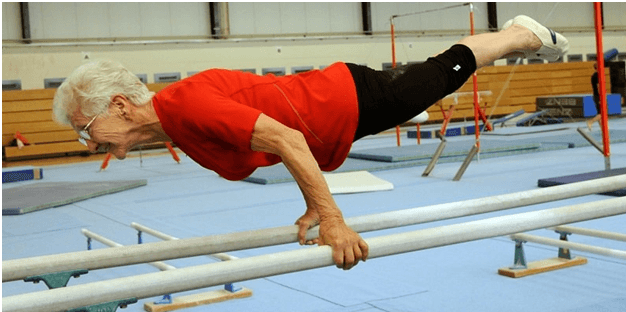
Awesome Johanna Quaas 94 years old – in training.
However, in some older adults the adaptations to a particular mode of exercise training are blunted compared to young.
This may reflect differences in physiologic reserve between young and old (e.g., similar resting heart rate, but far greater heart rate reserve in young) [7].
Exercise decreases the risk of all major cardiovascular diseases
A number of studies have shown a strong inverse relationship between habitual exercise and the risk of coronary disease, cardiac events, and cardiovascular death for both primary and secondary prevention [9].
Regular exercise can decrease the risk of following cardiovascular diseases:
- Coronary heart disease (CHD). Physical inactivity is a cause of at least one of three deaths from CHD.
Sufficient physical activity primarily prevents CHD.
Those who regularly exercise have 38-61% lower mortality risk from CHD[9].
- Stroke (cerebrovascular disease). Regular physical activity may prevent stroke in 10% to 30% cases, depending on the volume of activity.
By lowering blood pressure, improving blood vessels function and positively affecting lipid metabolism, physical exercise lowers the chance for stroke [10].
- High blood pressure (hypertension). Both aerobic and progressive resistance exercise may reduce increased blood pressure in adult humans, although evidence for aerobic exercise is stronger.
Hypertensive patients who do not exercise have 5-7 mmHg higher blood pressure compared to those who do[11].
- Congestive heart failure (CHF). Physical inactivity contributes development of CHF. Physical activity can primarily prevent CHF.
Observational data supports the notion that habitual endurance training is primary prevention against development of CHF [12].
- Peripheral arterial disease (PAD). In PAD,narrowed arteries reduce blood flow to limbs, sometimes causing leg pain, generally referred to as claudication (obstruction of the arteries causing cramping) when walking.
As atherosclerosis is by far the most common aetiology of PAD, and as physical activity primarily prevents coronary artery disease, speculation could be made that physical activity could also primarily prevent PAD [13].
And the fitter you are the better are your chances to do well at any stages.
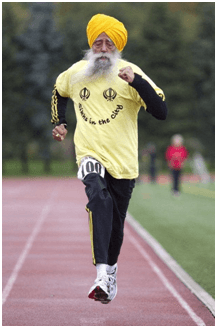
2019 – The amazing Fauja Singh, – 107 old runner
Regular exercise decreases the risk of diabetes mellitus development and its long-term complications
In addition to its cardiovascular benefits, regular and prescribed exercise can also improve glycemic control.
The positive effect on glycemic control mostly results from increased tissue sensitivity to hormone insulin.
During exercises, the muscle cells primarily use glucose and later convert muscle glycogen (macro-molecule, a stored form of glucose) to glucose to provide energy.
In addition to using muscle glycogen, exercising muscle also takes up glucose from the blood.
This process largely requires the availability of insulin.
By lowering blood glucose levels, regular exercising improves skeletal muscle adaptation in diabetes patients [14].
Several types of exercise, including traditional aerobic, resistance, and high-intensity, low-volume training, have been shown to reduce deleterious effects of diabetes [15].
Regular exercise is important for the obesity prevention and maintaining long-term weight loss
Preventing or treating obesity may lead to significant health benefits over the course of a lifetime.
Compared with a weight loss diet alone, diet coupled with either exercise or exercise and resistance training is associated with a greater reduction in body fat and enhanced preservation of body lean mass, compared with weight loss diet alone.
Aerobic exercise and resistance training, even in the absence of caloric restriction, may result in weight loss.
A minimum of 60 minutes a day of moderate intensity activity, sustained over years, is necessary to prevent weight gain[16].
Regular exercise improves memory, cognition, sleep and reduces anxiety, depression and stress
Exercise has been associated with improved cognitive function in both young and older adults.
Regular exercise is associated with improved sleep, reduced stress and anxiety, and a lower risk of depression.
Epidemiological, interventions, and mechanistic insights from human and rodent studies all suggest that physical inactivity can accelerate declines in cognitive function.
Such decline can be attenuated or potentially reversed by physical activity.
However, questions remain regarding the best practice for mode, duration, intensity, the long-lasting effects, potential gender-specific effects, and the interaction with genetic components [17].
Other health benefits
Exercise is also associated with an increase in bone mineral density in men and women.
Moreover, in patients with osteoporosis, exercise is associated with a decreased risk of hip fractures.
Nevertheless, regular physical activity is associated with fewer falls and fall-related injuries in older adults and, in pregnant women, with a reduced risk of excessive weight gain, gestational diabetes, and post-partum depression [18].
Elite personal trainer in London can customise an anti-ageing workout routine and play an important role in breaking the aging cycle
A personal elite trainer will use the correct exercise type combination, and teach you proper techniques, sequence and forms to do anti-aging weight loss exercises to:
- Lose weight
- Increase muscle strength
- Reduce and eliminate muscle pain
- Prevent further injuries
- Reduce the risk of chronic diseases
- Improve hormonal balance
- Make you feel less anxious and depressed
- Make you sleep better
- Make you look fresher
- Make you stay healthy.
Book now a FREE CONSULTATION with Jazz Alessi and find out how you can reduce and eliminate back pain.
Exercise is known to have positive effects on human muscle, joint, and intervertebral disc metabolism.
These tissues require some modest level of periodic loading in order to maintain their normal metabolism and regular repair from microtrauma.
Too little or too much exercise is detrimental to many musculoskeletal conditions, including lower back pain.
Core exercise and spine stabilisation programmes are based on the theory that deficits in core muscle function result in suboptimal postures and movements that contribute to back pain.
Optimal body movements require stabilising the body through recruitment of the core muscles of the abdominal wall, low back, pelvis, and diaphragm.
At the beginning, core strength and postures will be assessed by an elite personal trainer,
Then, proper exercises will be initiated to correct strength deficits and control core movements to promote a neutral or straight low back during activities [19].
Lower the risk of recurrent injuries with rehabilitation exercises performed under your elite personal trainer’ close follow-up
Athletes, laborers, and patients with bio-mechanical problems predisposing to injury should participate in age related rehabilitation or injury rehabilitation programs supervised by a knowledgeable elite trainer.
The key principle during rehabilitation is protected, gradually progressive exercise that allows for adequate bone healing while promoting cardio-respiratory fitness, muscular strength, and flexibility.
A rehabilitation programme designed by elite personal trainer helps patients recover strength and helps prevent further injuries.
For example, the ultimate goal for athlete is to return her or him to sports competition in a timely fashion while minimising the risks of re-injury or a second injury [20].
Customised Pilates improve core strength, flexibility, balance and could reduce muscle pain
There are good evidence that customised Pilates may improve flexibility, abdominal and lumbo-pelvic stability and muscular activity [21].
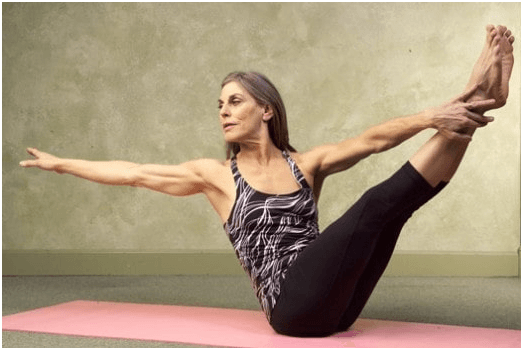
Additionally, different studies reveled that Pilates exercise supervised by personal trainer offers greater improvements in pain and functional ability compared to usual care, massage therapy and regular physical activity in the short term[22].
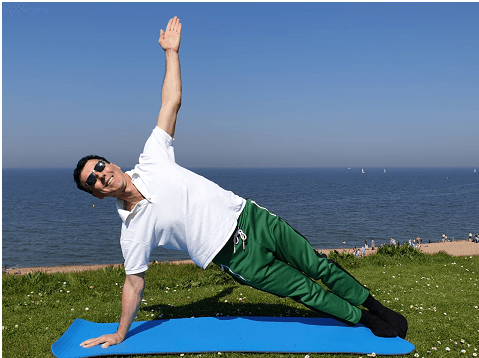
Book now a FREE CONSULTATION with Jazz Alessi and find out how you can reduce and eliminate muscles and joint pain.
Supervised stretching exercise: Who have the most benefits?
Stretching is a common exercise used by athletes, older adults, rehabilitation patients, and anyone participating in a fitness program.
While we all know the benefits of stretching, controversy remains about the best type of stretching for a particular goal or outcome.
Long term experienced elite exercise trainers in London might wisely use some of the following:
- If you are a professional athlete, dynamic stretching is recommended for warm-up. It increases your movement, blood and oxygen flow to soft tissues prior to exertion. Many professional sports trainers are aware of the role in dynamic stretching in improving performance and reducing the risk of injury.
On the other hand, static stretching may decrease your strength and performance before competition or activity and should be avoided.
- Older adults (over 65 years) should incorporate static stretching into an exercise regimen but, the stretches must be hold for longer and carefully used to avoid muscle tears and ligament injury.
- A variety of orthopedic patients can benefit from both pre-contraction and static stretching, although patients with joint contractures do not appear to have any benefit from stretching [23].
Book now a FREE CONSULTATION with Jazz Alessi and find out how you can increase flexibility, coordination and strength in a safe way and reduce the ageing effects.
What are the benefits of strength exercises supervised by an elite personal trainer in London?
Supervised strength exercise is a rational, explicit program of carefully chosen exercises performed over an extended period and designed by an elite personal trainer to increase the subject’s ability to produce muscular force in useful movement patterns.
This goal cannot be realised by sporadic, unplanned, random bouts of exercise, but rather requires the careful and progressive manipulation of training variables over time.
During strength traininga steady increase in the applied training stress produces a corresponding increase in physiologic and performance adaptation.
Strength exercise has well-established benefits to the cardiovascular system, including cardiac remodelling, improvements in blood pressure and moderation of cardiac risk factors [24].
Healthy ageing with a customised yoga program
Older adults (≥60 years) who are physically inactive are at increased risk of falls, disability, functional limitations and mental health complications.
Yoga is an alternative approach that may improve health and fitness outcomes in elderly.
During the supervised yoga classes, elite personal trainer modifies the practices so that each individual can adopt a safe variation of the poses and sequences that would not compromise their health.
For example, individuals with osteoporosis will not perform the original yoga’s forward bending exercise.
They will be instructed to flex only at the hip and to avoid flexion of the spine.
On the other hand, people with hypertension or cardiac conditions need to modify the angle of the forward bend so that the head is never lower than the heart.
Those with replacement knees or hips should not expose the artificial joint.
Patients with dementia, Alzheimer, or suspected cognitive impairment need to have tools to help them to remember sequences during exercising, such as performing actions while singing well-known songs from childhood [25].
Health benefits of prescribed aerobics exercise
According to the The American College of Sports Medicine (ACSM) aerobic exercise is defined as any activity that uses large muscle groups, can be maintained continuously and has rhythmic nature.
Examples of aerobic exercise are cycling, jogging/long distance running, dancing, hiking, swimming and walking.
Various studies proved the advantages of aerobic exercise in preventing and reversing cardiovascular disease [26].
Studies also showed that aerobic exercise improves:
- Cognition in patients with dementia
- Cognitive flexibility and attention in traumatic brain injury patients
- Choice reaction time in people with multiple sclerosis
- Motor learning in people with chronic stroke [27].
- Significantly improve your body appearance

Moreover, aerobic exercise may reduce the risks of obesity, diabetes, osteopenia (reduced bone mass), osteoporosis, and sarcopenia (reduced muscle mass) associated with the aging process [28].
We can all train customised and more intelligently. Move smarter to move more and gain more!
Book now a FREE CONSULTATION with Jazz Alessi.
References:
- Holloszy JO. The biology of aging. Mayo Clin Proc. 2000;75 Suppl:S3-8; discussion S8-9. https://www.ncbi.nlm.nih.gov/pubmed/10959208
- Viña J, Rodriguez-Mañas L, Salvador-Pascual A, Tarazona-Santabalbina FJ, Gomez-Cabrera MC. Exercise: the lifelong supplement for healthy ageing and slowing down the onset of frailty. J Physiol. 2016;594(8):1989-99. https://www.ncbi.nlm.nih.gov/pubmed/26872560
- Redman M, King A, Watson C, King D. What is CRISPR/Cas9?. Arch Dis Child EducPract Ed. 2016;101(4):213–215. doi:10.1136/archdischild-2016-310459. https://www.ncbi.nlm.nih.gov/pmc/articles/PMC4975809/
- Adli M. The CRISPR tool kit for genome editing and beyond. Nat Commun. 2018;9(1):1911. doi:10.1038/s41467-018-04252-2. https://www.ncbi.nlm.nih.gov/pmc/articles/PMC5953931/
- Rebelo-Marques A, De Sousa Lages A, Andrade R, et al. Aging Hallmarks: The Benefits of Physical Exercise. Front Endocrinol (Lausanne). 2018;9:258. https://www.ncbi.nlm.nih.gov/pmc/articles/PMC5980968/
- Booth FW, Laye MJ, Roberts MD. Lifetime sedentary living accelerates some aspects of secondary aging. J Appl Physiol (1985). 2011;111(5):1497-504. https://www.ncbi.nlm.nih.gov/pubmed/21836048
- Cartee GD, Hepple RT, Bamman MM, Zierath JR. Exercise Promotes Healthy Aging of Skeletal Muscle. Cell Metab. 2016;23(6):1034-1047. https://www.ncbi.nlm.nih.gov/pubmed/27304505
- Egan B, Zierath JR. Exercise metabolism and the molecular regulation of skeletal muscle adaptation. Cell Metab. 2013;17(2):162-84. https://www.ncbi.nlm.nih.gov/pubmed/23395166
- Kokkinos P, Myers J, Faselis C et al. Exercise capacity and mortality in older men: A 20-year follow-up study. 2010;122(8):790-7. https://www.ncbi.nlm.nih.gov/pubmed/20697029
- Reimers CD, Knapp G, Reimers AK. Exercise as stroke prophylaxis. Dtsch Arztebl Int. 2009;106(44):715-21. https://www.ncbi.nlm.nih.gov/pubmed/19997550
- Physical Activity Guidelines Advisory Committee. Physical Activity Guidelines Advisory Committee Report, 2008. http://wwwhealthgov/paguidelines/Report/pdf/CommitteeReportpdf, 2008
- Arbab-Zadeh A, Dijk E, Prasad A, Fu Q, Torres P, Zhang R, Thomas JD, Palmer D, Levine BD. Effect of aging and physical activity on left ventricular compliance. Circulation 110: 1799-1805, 2004.https://www.ncbi.nlm.nih.gov/pubmed/15364801
- McDermott MM, Liu K, Ferrucci L, Criqui MH, Greenland P, Guralnik JM, Tian L, Schneider JR, Pearce WH, Tan J, Martin GJ. Physical performance in peripheral arterial disease: A slower rate of decline in patients who walk more. Ann Intern Med 144: 10-20, 2006. https://www.ncbi.nlm.nih.gov/pubmed/16389250
- Colberg SR, Sigal RJ, Fernhall B et al. American College of Sports Medicine;American Diabetes Association. Exercise and type 2 diabetes: the American Collegeof Sports Medicine and the American Diabetes Association: joint positionstatement. Diabetes 2010;33(12):e147-67.https://www.ncbi.nlm.nih.gov/pubmed?term=21115758
- Jensen TE, Richter EA. Regulation of glucose and glycogen metabolism duringand after exercise. J Physiol. 2012;590(5):1069-76. https://www.ncbi.nlm.nih.gov/pubmed?term=22199166
- Lee IM, Djoussé L, Sesso HD, Wang L, Buring JE. Physical activity and weight gain prevention. JAMA. 2010;303(12):1173-9. https://www.ncbi.nlm.nih.gov/pubmed?term=20332403
- Loprinzi PD, Kane CJ. Exercise and cognitive function: a randomized controlledtrial examining acute exercise and free-living physical activity and sedentaryeffects. Mayo Clin Proc. 2015;90(4):450-60.https://www.ncbi.nlm.nih.gov/pubmed?term=25746399
- Piercy KL, Troiano RP, Ballard RM et al. The Physical Activity Guidelines for Americans. JAMA. 2018;320(19):2020-2028. https://www.ncbi.nlm.nih.gov/pubmed?term=30418471
- Cho HY, Kim EH, Kim J. Effects of the CORE Exercise Program on Pain and ActiveRange of Motion in Patients with Chronic Low Back Pain. J Phys Ther Sci. 2014;26(8):1237-40. https://www.ncbi.nlm.nih.gov/pubmed?term=25202188
- Dhillon H, Dhilllon S, Dhillon MS. Current Concepts in Sports Injury Rehabilitation [published correction appears in Indian J Orthop. 2017 Nov-Dec;51(6):724]. Indian J Orthop. 2017;51(5):529–536. https://www.ncbi.nlm.nih.gov/pmc/articles/PMC5609374/
- Kloubec J. Pilates: how does it work and who needs it?. Muscles Ligaments Tendons J. 2011;1(2):61–66. https://www.ncbi.nlm.nih.gov/pmc/articles/PMC3666467/
- Wells C, Kolt GS, Marshall P, Hill B, Bialocerkowski A. The effectiveness of Pilates exercise in people with chronic low back pain: a systematic review. PLoS One. 2014;9(7):e100402. https://www.ncbi.nlm.nih.gov/pmc/articles/PMC4077575/
- Page P. Current concepts in muscle stretching for exercise and rehabilitation. Int J Sports PhysTher. 2012;7(1):109–119.https://www.ncbi.nlm.nih.gov/pmc/articles/PMC3273886/
- Kraemer WJ, Ratamess NA. Fundamentals of resistance training: progression and exercise prescription. Med Sci Sports Exerc. 2004;36(4):674-88. https://www.ncbi.nlm.nih.gov/pubmed?term=15064596
- Tew GA, Howsam J, Hardy M, Bissell L. Adapted yoga to improve physical function and health-related quality of life in physically-inactive older adults: a randomised controlled pilot trial. BMC Geriatr. 2017;17(1):131. https://www.ncbi.nlm.nih.gov/pmc/articles/PMC5481961/
- Patel H, Alkhawam H, Madanieh R, Shah N, Kosmas CE, Vittorio TJ. Aerobic vsanaerobic exercise training effects on the cardiovascular system. World J Cardiol. 2017;9(2):134–138. https://www.ncbi.nlm.nih.gov/pmc/articles/PMC5329739/
- Wilmore JH. Aerobic exercise and endurance: improving fitness for healthbenefits. Phys Sportsmed. 2003;31(5):45-51.https://www.ncbi.nlm.nih.gov/pubmed/2062750
- McDonnell MN, Smith AE, Mackintosh SF. Aerobic exercise to improve cognitivefunction in adults with neurological disorders: a systematic review. Arch Phys Med Rehabil. 2011;92(7):1044-52. https://www.ncbi.nlm.nih.gov/pubmed/21704783



